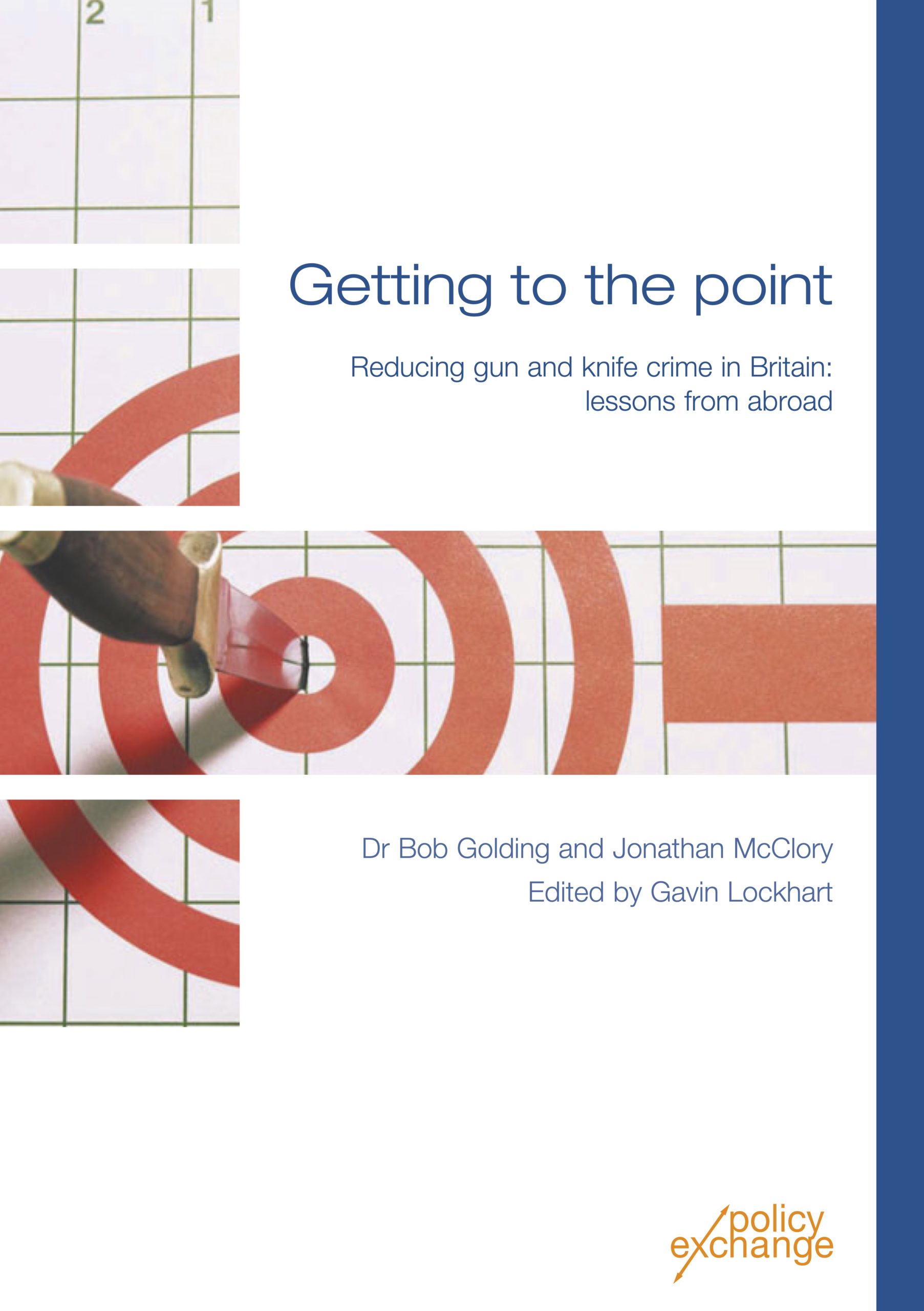
Getting to the point: Reducing gun and knife crime in Britain: lessons from abroad
By Jonathan McClory, Dr Bob Golding Edited by Gavin Lockhart
Since the first report in this series was published in July 2008, gun and knife crime has stubbornly remained in the headlines – and on the political agenda. Murder is always shocking; never more so than when both perpetrator and victim are young. Twenty-seven people were killed as a result of gun and knife crime on London’s streets in 2008 and 380 people in England and Wales as a whole. And there is a wider economic cost to this human loss. The economic cost of all murders with firearms amounted to more than £200 million. When murders with knives are included, the cost is approximately £628 million. The number of knife murders has increased by 23% over the past ten years; injuries caused by knives have increased by 30% from 1997, and police arrests for carrying a weapon with a blade or point in and near schools went up 500% from 1999 to 2005. Culprits are younger, and the fear that they spread is driving more young people to carry knives for self-protection.
Injuries and deaths from knives far outstrip those from firearms: knife crimes are four times more common than gun crimes; and the risk of serious injury is more than double that for gun crime. Guns are strictly regulated but restricting the supply of knives is impossible. So, what should the Government do?
Dr Bob Golding and Jonathan McClory build on the findings of their first report, and discuss four case studies from international cities that have successfully reduced violent gun and knife crime.

